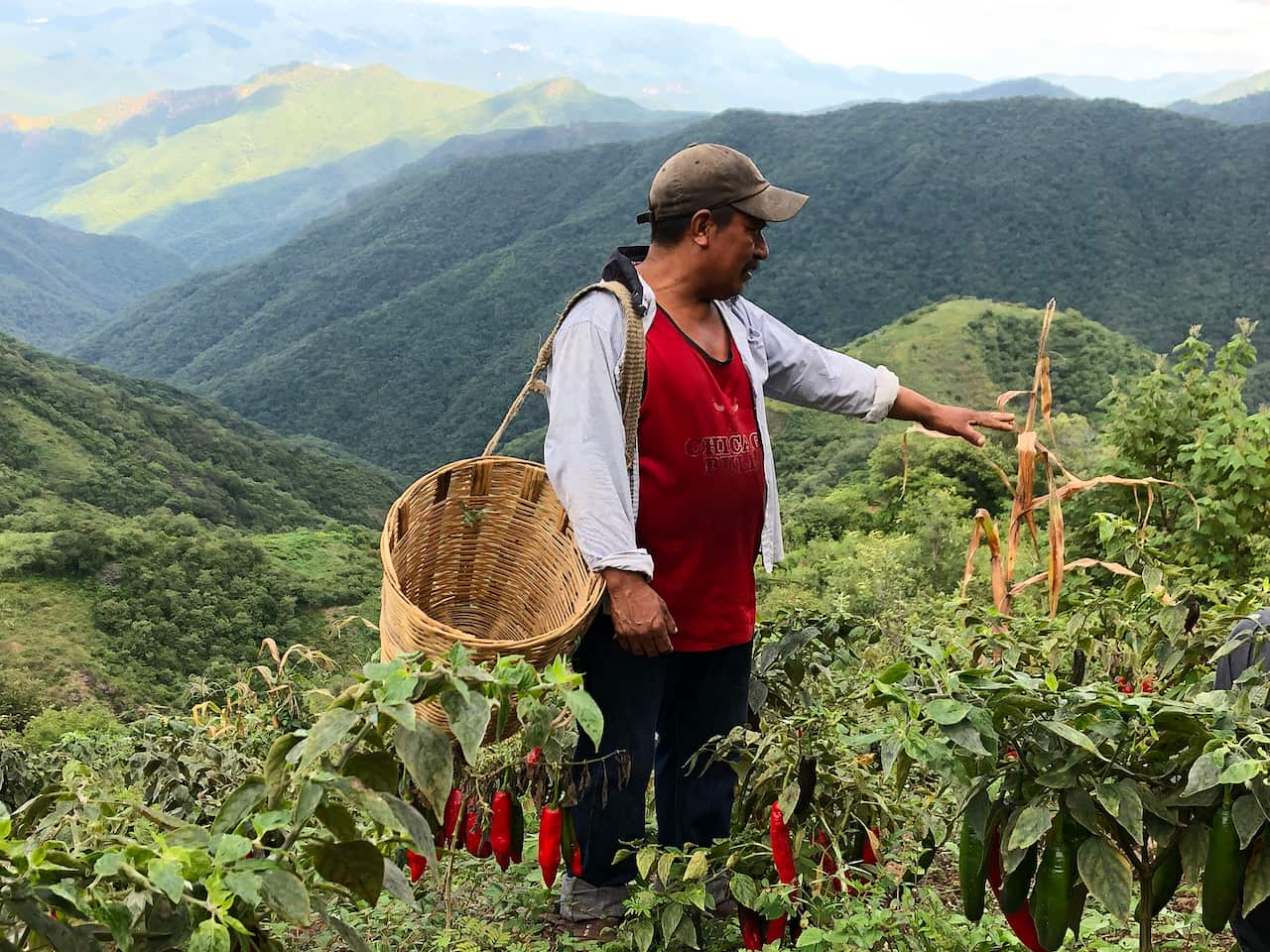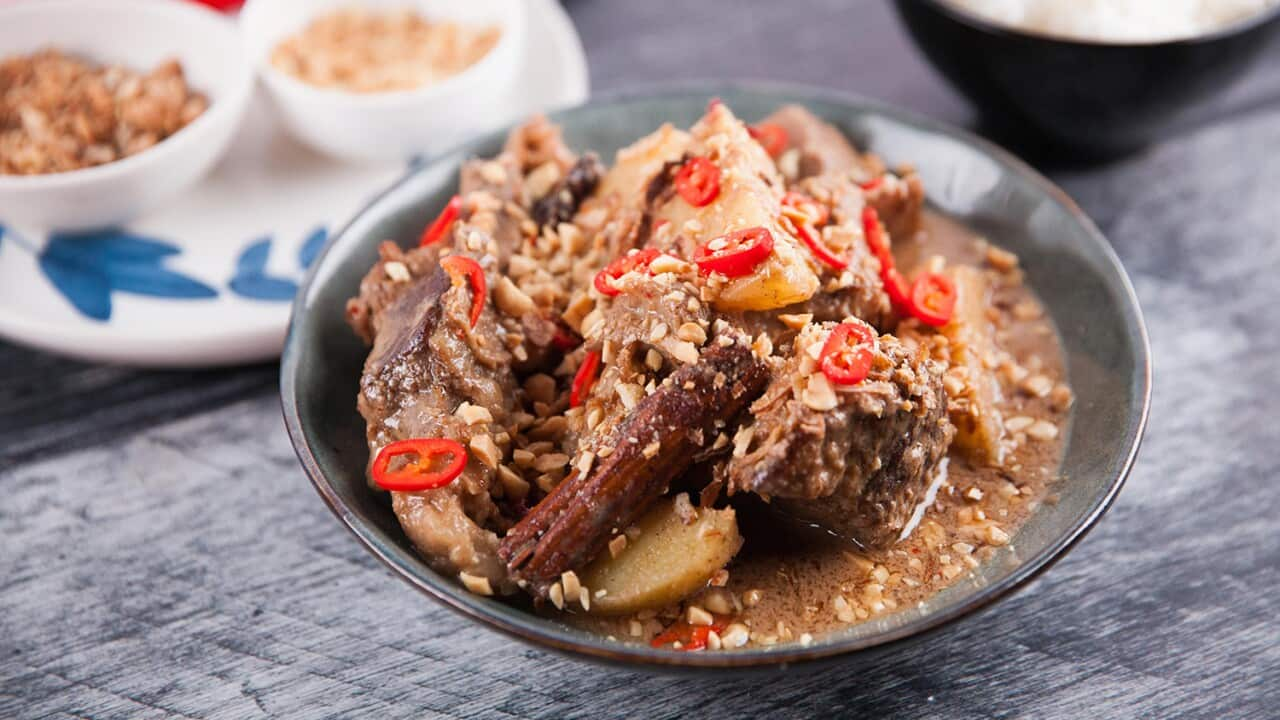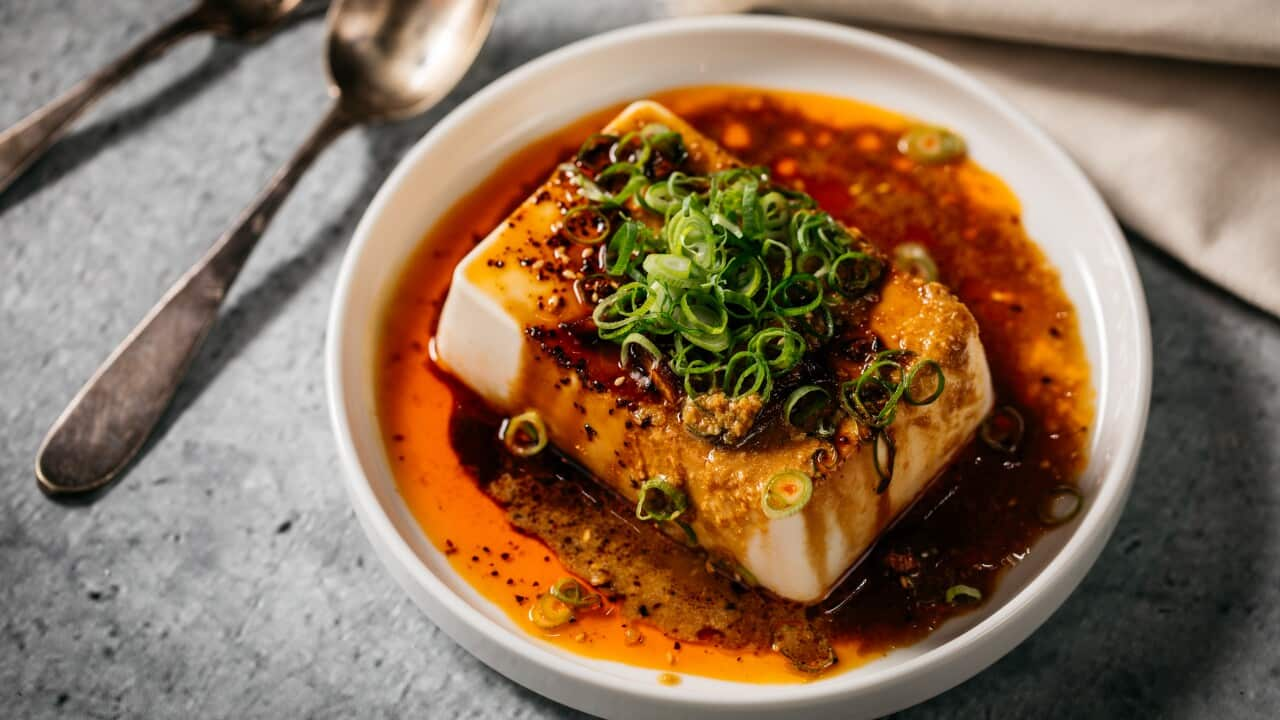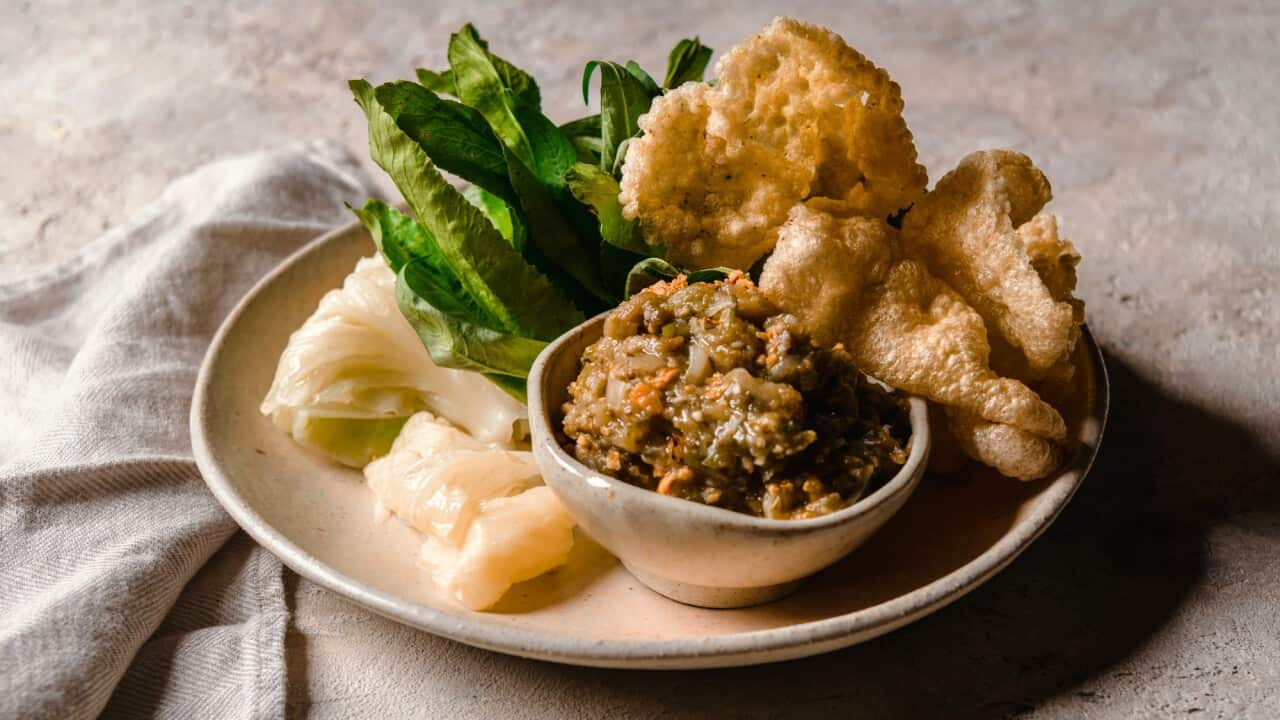— Chiliheads airs Wednesday, 13 March at 9.40pm on SBS VICELAND and will be streaming atafter it airs. —
“As far back as I can remember, I was fascinated by chillies. As a boy, I was intrigued by adults who consumed it with pleasure while showing obvious signs of pain. So, I too was tempted... and I succumbed to its grip,” says Julien Fréchette, the French-Canadian filmmaker who turned the lens on his passion for the fiery fruit in his feature documentary Chiliheads.
Whether you love the burn or not, it’s a fascinating film, as much about the people who grow, cook or sometimes obsess about chillies as it is about the little hot peppers themselves, from Mexican chef Aurora Martínez, who treats the chilli almost as a sacred object, to the man dubbed the ‘pope of peppers’, New Mexico author Dave Dewitt, and even scientists exploring the heat and genetics of chillies.

Mexican chef Aurora Martínez Credit: Toast TV / Frédérique Ménard Aubin
Frechette kicks things off close to home, talking to . “I'm someone who tolerates pain to extremes…. You build up so much capsaicin in your body that your tears burn your eyes,” says Dube, winner of many hot sauce competitions and with an extraordinary tolerance built up over decades. “What is your definition of a chilihead,” Flechette asks him. “Real chiliheads eat chili for the pleasure of eating chili, for the taste, because they love the burn. Maybe a bit masochistic, but yes, there's a pleasure to be found in the burn,” he answers.
But Chiliheads isn’t just about the burn. It travels to Mexico, which has long embraced the chilli, and where, the doco tells us, annual consumption is estimated to be more than 15 kilograms per person, to talk to ethnobotanist Araceli Aguilar-Melendez, who specialises in the fiery fruit. “We inherited the idea that chili peppers are our life force. If we eat chili, we're fine, we're happy. In Mexico, chili is omnipresent. Not only physically but also symbolically.” At Restaurant Zandunga in Oaxaca, chef Aurora Martínez gives a formal thanks to a handful of chillies for driving bad energy from the space, before she cooks up a mole negro. And at Aqua Blanca up in the mountains, we meet a farmer who harvests the famous pasilla de Oaxaca, a chilli known for its smokiness.

Manuel Rivera Gomez, a farmer, in the mountains harvesting pasilla de Oaxaca. Credit: Toast Tv / Frédérique Ménard Aubin
Fréchette also travels to India, one of the biggest chilli-producing and exporting countries in the world, to meet one of Rajasthan's biggest dried chilli producers and learn more about the Rajasthan pepper, and visit a big market in New Delhi to meet a writer and chef Ruchira Hoon, who explains how the different levels of heat and variety of flavours of the different chillies work in Indian food
Sometimes, it is all about the heat: the documentary also dives into mouth blasters such as the Bhut Jolokia, or ghost pepper, which ranks just over one million units on the Scoville scale, which is used to measure chilli intensity (for comparison, jalapenos rank around 4000-10,000 and a habanero 300,000) and the Trinidad Scorpion, which ranks over 1.2 million units (fun fact – a Trinidad Scorpion from Australia was the Guinness World Record back in 2011, with a score of 1,463,700 SCU, though it’s since been surpassed by several ). And if you’re intrigued by the idea of hot chilli record controversy, the doco touches on that too, although Troy Primeaux and Ed Currie sound rather calm – at least now – for men so obsessed with fiery peppers.

Fiery peppers on sale in a market in Trinidad. Credit: Toast TV / Frédérique Ménard Aubin
In a laboratory in Montreal, there’s a small experiment, where Fréchette, his son and a few others, including chilli fan Claude Dube, wear a special helmet to see what happens when they bite into a series of increasingly hot chillies (there’s no pressure to continue if they don’t want to), starting with a jalapeno and moving through a 50,000 SHU Thai Chilli pepper, a 350,000 SHU habanero, a fiery bhut jolokia (“It hurts,” says one of the participants, unsurprisingly but surprisingly calmly), and a 1,600,000 SHU Carolina Reaper. The equipment shows that while some are experiencing increasing negative emotions, Dube also shows joy and positive emotions. “It’s like, ‘it hurts, but I like it’,” says one of the neurobiologists, looking at the results. Dube has certainly built up a high pain tolerance – and for him, there’s one more level to try: pure capsaicin, which ranks a hellish 16 million SCU.
What you realise by the end of Chiliheads is that it’s far more than just an ingredient. It’s a challenge, a story, it’s culture in a fiery fruit that looks a little different, tastes a little different, and is used differently, around the world.
“Whether it brings pain or pleasure, it will continue to arouse many passions,” says Frechette.
HOT (AND NOT) WAYS TO EMBRACE THE CHILLI

Spice up your life with hot sauces from around the world











